
Make a Pulsar: Vela in 3D
The Vela Pulsar is the aftermath of a star that collapsed. The explosion sent a remarkable storm of particles and energy into space. NASA’s Chandra X-ray Observatory and other telescopes have captured this storm. At the center of Vela is what astronomers call a pulsar, a rapidly spinning dense star that sends beams of light out into space like a cosmic lighthouse. This pulsar, about 1,000 light-years from Earth, spins faster than a helicopter rotor and spews out a jet of particles at almost the speed of light.
Vela Pulsar in Context:
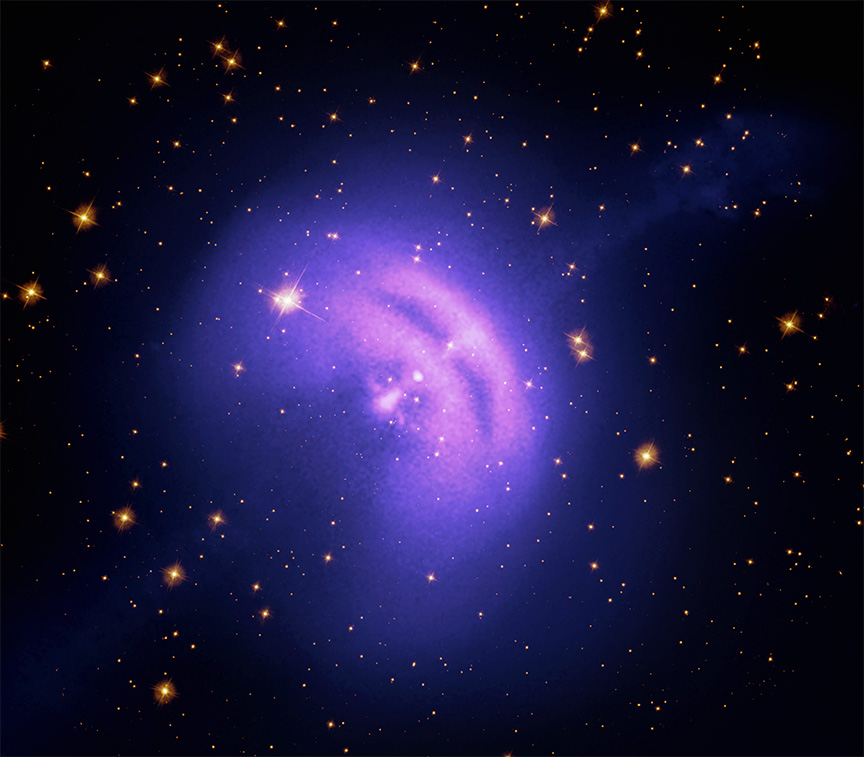
Chandra X-ray & Hubble Optical Image of Vela Pulsar. Image credit: X-ray: NASA/CXC/SAO; Optical: NASA/ESA/STScI; Image processing: NASA/CXC/SAO/J. Schmidt, K. Arcand
This Chandra X-ray image of the Vela pulsar shows a dramatic bow-like structure at the leading edge of the cloud, or nebula, embedded in the Vela supernova remnant. Astronomers think this bow and the smaller one inside it are the near edges of tilted rings of X-ray emission from high-energy particles produced by the central neutron star. Perpendicular to the bows are jets that emanate from the central pulsar, or neutron star. The jets point in the same direction as the motion of the pulsar. The swept back appearance of the nebula is due to the motion of the pulsar through the supernova remnant. Optical data from Hubble shows the stars in the field of view (in gold).
Scientists think the rings represent blast waves from matter rushing away from the neutron star. More focused flows at the neutron star's polar regions produce the jets. The origin of this activity is thought to be enormous electric fields caused by the combination of the rapid rotation and intense magnetic fields of the neutron star.
The supernova that produced the Vela pulsar and supernova remnant must have appeared extraordinarily bright on Earth, some 50 times brighter than Venus. Since no records of the event are known to exist, one can only imagine what our ancestors must have thought of it.
Vela Pulsar in Motion
Credit: NASA/CXC/Univ of Toronto/M.Durant et al
This movie from NASA's Chandra X-ray Observatory shows a fast moving jet of particles produced by the rapidly rotating neutron star in the Vela pulsar, and may provide new insight into the nature of some of the densest matter in the universe.
The star of this movie is the neutron star that was formed when a massive star collapsed. The Vela pulsar is about 1,000 light years from Earth, spans about 12 miles in diameter, and makes over 11 complete rotations every second, faster than a helicopter rotor. As the pulsar whips around, it spews out a jet of charged particles that race out along the pulsar's rotation axis at about 70% of the speed of light. In this still image from the movie, the location of the pulsar and the 0.7-light-year-long jet are labeled.
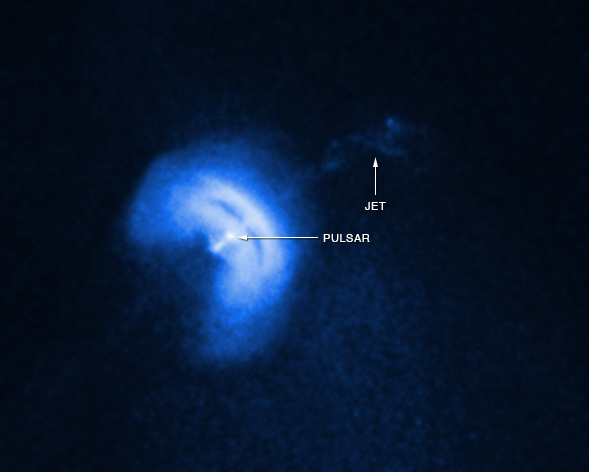
Labeled Vela Pulsar Jet. Image Credit: NASA/CXC/Univ of Toronto/M.Durant et al
The Chandra data shown in the movie, containing 8 images obtained between June and September 2010, suggest that the pulsar may be slowly wobbling, or precessing, as it spins. The shape and the motion of the Vela jet look strikingly like a rotating helix, a shape that is naturally explained by precession, as shown in this animation. If the evidence for precession of the Vela pulsar is confirmed, it would be the first time that a jet from a neutron star has been found to be precessing in this way.
One possible cause of precession for a spinning neutron star is that it has become slightly distorted and is no longer a perfect sphere. This distortion might be caused by the combined action of the fast rotation and "glitches", sudden increases of the pulsar's rotational speed due to the interaction of the superfluid core of the neutron star with its crust.
The Earth also precesses as it spins, with a period of about 26,000 years. In the future Polaris will no longer be the "north star" and other stars will take its place. The period of the Vela precession is much shorter and is estimated to be about 120 days.
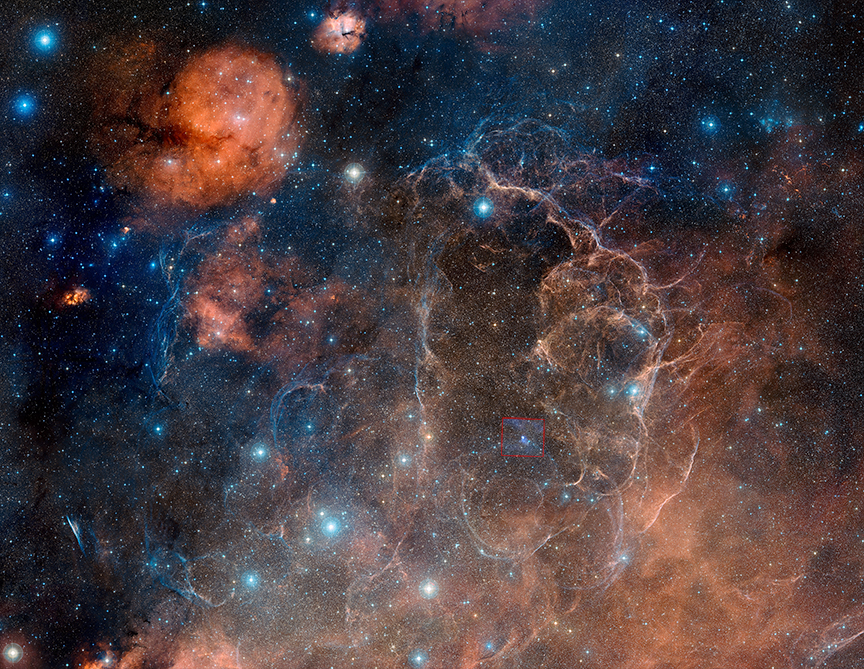
Wide field Optical and X-ray inset (small red box). Credit: X-ray: NASA/CXC/SAO; Optical: Anglo-Australian Observatory's UK Schmidt telescope
The supernova that formed the Vela pulsar exploded over 10,000 years ago. This optical image from the Anglo-Australian Observatory's UK Schmidt telescope shows the enormous apparent size of the supernova remnant formed by the explosion. The full size of the remnant is about eight degrees across, or about 16 times the angular size of the moon. The red square near the center shows the Chandra image with a larger field-of-view than used for the movie, with the Vela pulsar in the middle.
Vela Pulsar in 3D: Anatomy of the Vela Pulsar
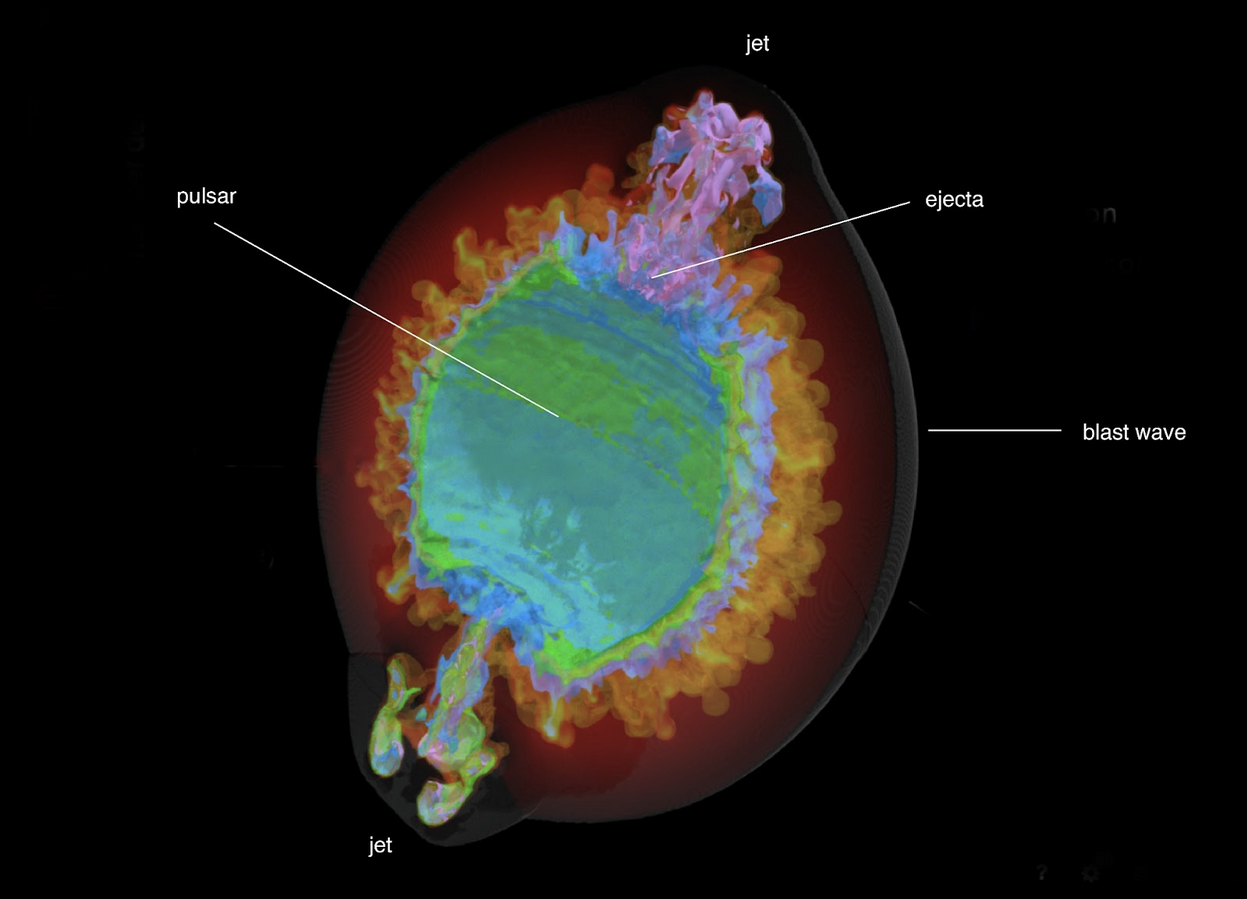
Image snapshot from 3D model of Vela Pulsar by Sal Orlando. Labels: NASA/CXC/SAO/K.DiVona
The 3D model of the Vela Pulsar from Salvatore Orlanda/INAF showcases the distribution of chemical elements at the age of 5,000 years after the supernova event. The model is shown cut in half so that you can see inside the supernova remnant. The items labeled include:
Pulsar: At the center of Vela is a pulsar, a rapidly spinning dense star that sends flashes of light out into space like a cosmic lighthouse (not pictured in the model, it is visible in the Chandra image)
Jet: As the pulsar whips around, it spews out a jet of charged particles that race out along the pulsar’s rotation axis at about 70% the speed of light.
Ejecta: This model shows the distributions of iron (purple), silicon (green), and oxygen (blue) ejected from the star, about 5,000 years after the supernova occurred.
Blast wave: An envelope of energy is pushed outward from the energetic pulsar and its jets. The jets cause protrusions in this otherwise spherical envelope at the poles.
Tour the Vela Pulsar in 3D
The Vela Pulsar in 3D is available annotated with highlighted areas of interest, incorporating, for the first time on the Smithsonian Voyager 3D platform, audio and text versions of visual description tours, which walk the user through the details of the models, describing the textures and shapes and what they represent. To interact with the object or take the virtual tour, visit the SI Voyager 3D page.
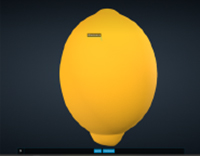
1. The Vela model comes into view as a smooth, yellow, rounded shape, like a lemon cut into quarters, a sphere misshapen at both poles, so that a little bit of a bump protrudes. This yellow section is the blast wave, an envelope of energy pushed outward from the energetic pulsar and its jets. The jets are causing the protrusions at the poles.
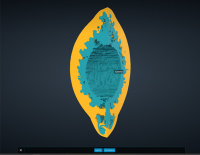
2. The model is cut into quarters so that we see it as a cross-sectional view, with 2 flat sides that when 3D-printed can sit on a table, partially obscuring the complex inner structure, the ejecta, or material thrown off from the creation of the pulsar, colored turquoise in the model.
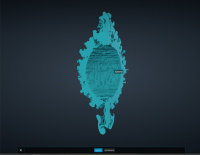
3. Turn off the blast wave and now the irregular shape of this smaller inner shape is revealed.
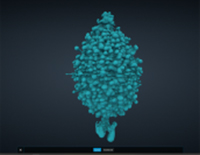
Instead of being smooth and fairly regular like the blast wave, it's more like a bunch of grapes branching out from a central source, with 2 poles that resemble geysers shooting away from the center.
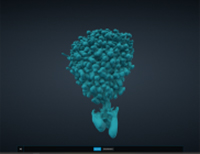
4. One jet seems stronger than the other, and pushes further away, creating a shape that's more distinct than the other.
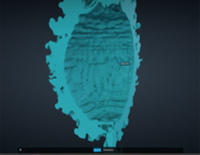
5. The flat, cut-off side is hollowed out, bumpy but less so than the grape-like exterior of the ejecta, carving out a spherical cavity in the center of the object.
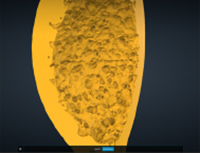
6. Turn the blast wave back on and the ejecta off, and the inner surface of the blast wave is revealed, as if imprinted with the bunchy shape of the ejecta and its jets.
Image Still Credits: NASA/CXC/SAO; INAF-Observatorio Astronomico di Palermo/ S.Orlando & NASA/CXC/SAO/A.Jubett et al.
Vela Pulsar Sonification
The Vela Pulsar data has also been converted to sound through a process called data sonification. In this sonification, listen to a radar-like scan, clockwise from 12:00 of the image. Brightness is mapped to volume. Distance from the center is mapped to pitch (farther away is higher pitch). For the Chandra X-ray data, the bright inner region (violet) is mapped to a low synth sound, with 11 Hz oscillations matching the period of the pulsar. The dimmer outer region (blue) and jet are mapped to a wind-like sound. A long upper jet can be heard around 4 seconds in, and a bright, but much shorter lower jet can be heard around 20 seconds. For the Hubble optical data, the stars are mapped to notes on a plucked-type synth (where brighter stars are louder, and stars farther from the center are higher pitched).
Image Credit: X-ray: NASA/CXC/SAO; Optical: NASA/ESA/STScI; Image processing: NASA/CXC/SAO/J. Schmidt, K. Arcand; Sonification credit: NASA/CXC/SAO/K.Arcand, SYSTEM Sounds (M. Russo, A. Santaguida)
3D Printing: Print Your Own Vela Pulsar:
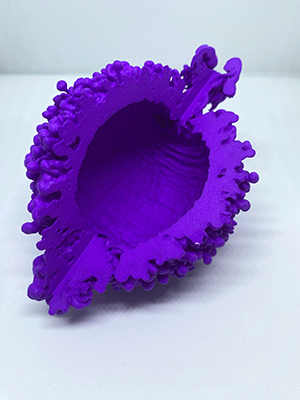

The 3D model serves as a scientifically informed approximation for visualizing the Vela Pulsar. The Vela Pulsar is the aftermath of a star that collapsed. The explosion sent a remarkable storm of particles and energy into space. NASA’s Chandra X-ray Observatory and other telescopes have captured this storm. At the center of Vela is what astronomers call a pulsar, a rapidly spinning dense star that sends beams of light out into space like a cosmic lighthouse.
The 3D print shows the jets that emanate from the central pulsar, or neutron star (not pictured in the 3D print, but it is located at the very center of the object, see the Chandra/Hubble image at the very top of the page). The jets point in the same direction as the motion of the pulsar. This model also shows the “ejecta” or the material ejected about 5,000 years after the supernova occurred. Additionally, the blast wave is a separate 3D printable piece. It is an envelope of energy pushed outward from the energetic pulsar and its jets. The jets cause protrusions in this otherwise spherical envelope at the poles.
Select the 3D printer of your choice to make your own Vela Pulsar. Download the files below. For our 3D-printed example shown here, the 2 different pieces (ejecta, blastwave) were printed separately. Two colors of PLA filament were used, 1 color for the ejecta (purple) and a second for the blastwave (pink). Support structures were not required.
RESOURCES
DOWNLOADABLES
3D Print Your Own Vela Pulsar Handout
LINKS TO OTHER ACTIVITIES
Coding & Astronomy
Recoloring the Universe with Pencil Code
3D Printing
Universe in 3D
Make the Most of Your Universe
Published: April 2024





